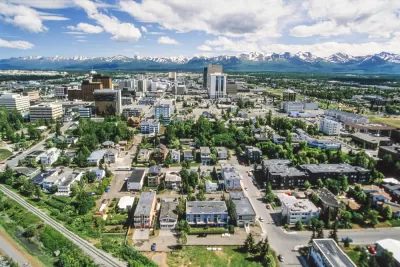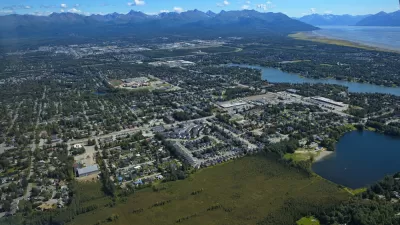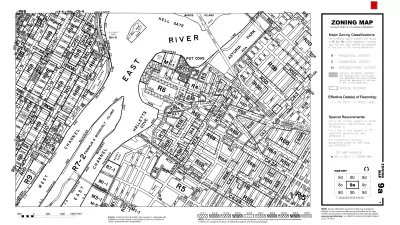A revised, scaled-back version of a zoning reform effort in Anchorage would concentrate the proposed consolidation of residential zoning districts in one part of the city.

Anchorage Assemblymembers have scaled back the zoning consolidation proposed by the “Housing Opportunities in the Municipality for Everyone” (HOME) an initiative that previously would have reduced the number of residential zoning district’s in the city to one.
Anchorage Assembly members Meg Zaletel and Daniel Volland have revised the proposed zoning changes into a more “targeted” approach, according to a paywalled article by Alex DeMarban for the Anchorage Daily News.
“The new proposal would still sharply reduce the city’s residential zoning categories, from 15 to five, but it would be based on land-use categories spelled out in the 2040 land-use plan adopted six years ago,” writes DeMarban, citing a document published ahead of an assembly meeting scheduled for August 22.
Instead of combining all residential zoning into one district, as proposed in the earlier version of the HOME initiative, the revised proposal “would only apply to the Anchorage Bowl, not Eagle River and Girdwood,” adds DeMarban.
“The original proposal would have shrunk the city’s residential zones to essentially one category, divided only by areas with city-provided plumbing and areas like those near the Hillside that use wells and septic systems,” adds DeMarban. “It also proposed a 1 1/2-year process to rewrite residential sections of Title 21, the land-use code, a period critics said was far too short.”
More details on how the revised HOME initiative reflects the vision laid out in the city’s 2040 land use plan are included in the source article.
FULL STORY: Addressing criticism, Assembly members propose more modest overhaul of Anchorage zoning

Americans May Be Stuck — But Why?
Americans are moving a lot less than they once did, and that is a problem. While Yoni Applebaum, in his highly-publicized article Stuck, gets the reasons badly wrong, it's still important to ask: why are we moving so much less than before?

Using Old Oil and Gas Wells for Green Energy Storage
Penn State researchers have found that repurposing abandoned oil and gas wells for geothermal-assisted compressed-air energy storage can boost efficiency, reduce environmental risks, and support clean energy and job transitions.

Placekeeping: Setting a New Precedent for City Planners
How a preservation-based approach to redevelopment and urban design can prevent displacement and honor legacy communities.

Study: Maui’s Plan to Convert Vacation Rentals to Long-Term Housing Could Cause Nearly $1 Billion Economic Loss
The plan would reduce visitor accommodation by 25,% resulting in 1,900 jobs lost.

Idaho Data: Unexpected Vehicle Repairs Exacerbate Housing Instability, Eviction Risk
Over 21 percent of clients struggle with transportation barriers.

A Year-Long Investigation On Permanent Supportive Housing
The New York Times reveals what’s working and what’s not in the cornerstone of Housing First.
Urban Design for Planners 1: Software Tools
This six-course series explores essential urban design concepts using open source software and equips planners with the tools they need to participate fully in the urban design process.
Planning for Universal Design
Learn the tools for implementing Universal Design in planning regulations.
Heyer Gruel & Associates PA
City of Moreno Valley
Institute for Housing and Urban Development Studies (IHS)
City of Grandview
Harvard GSD Executive Education
Salt Lake City
NYU Wagner Graduate School of Public Service
City of Cambridge, Maryland




























